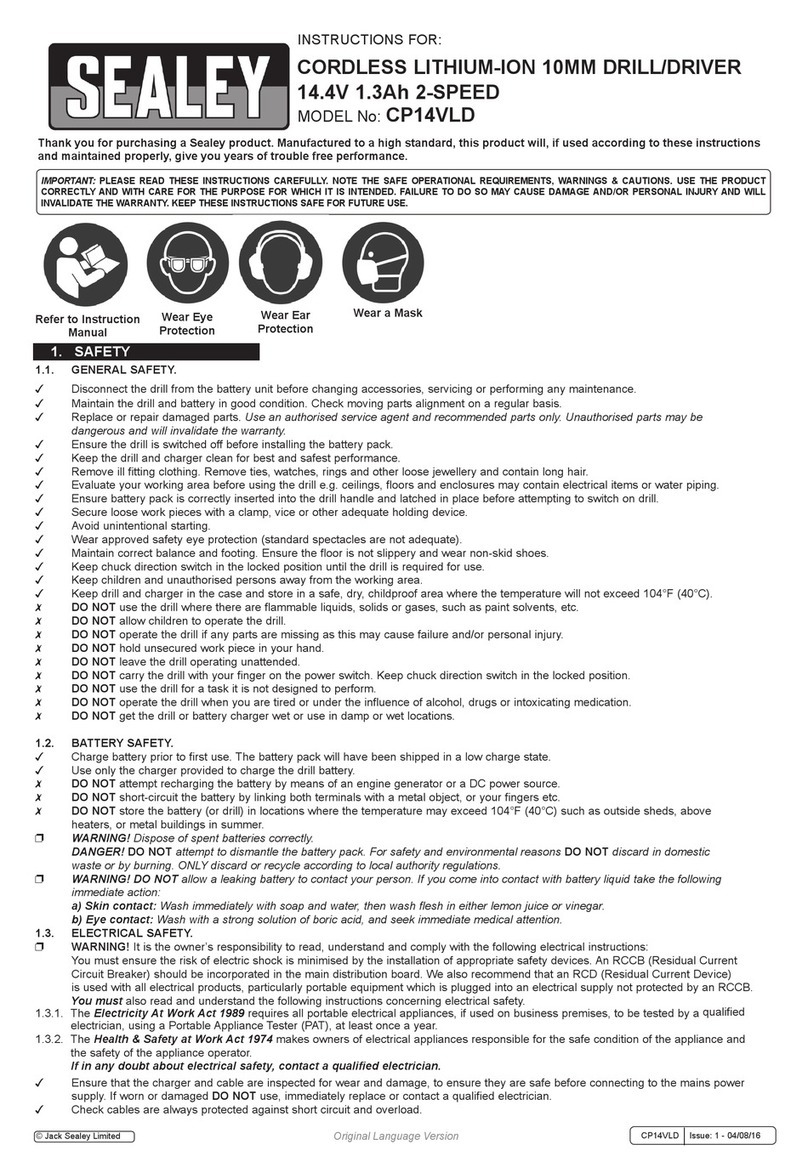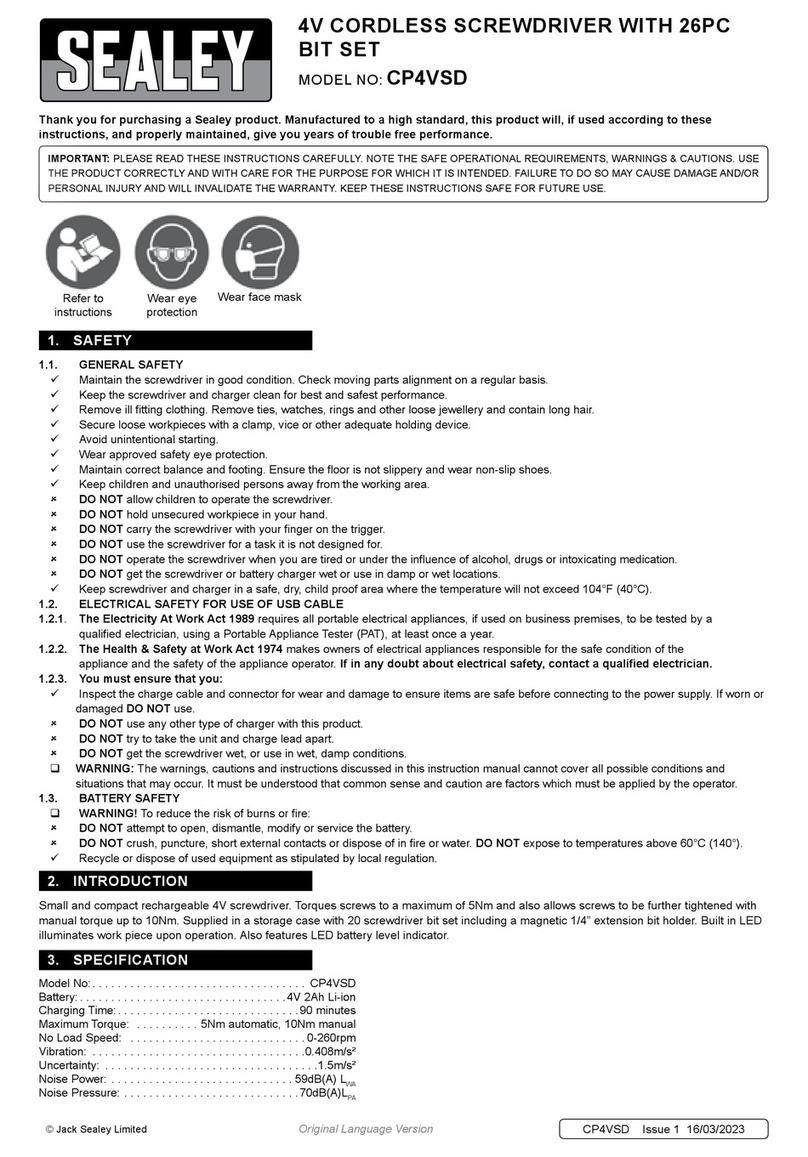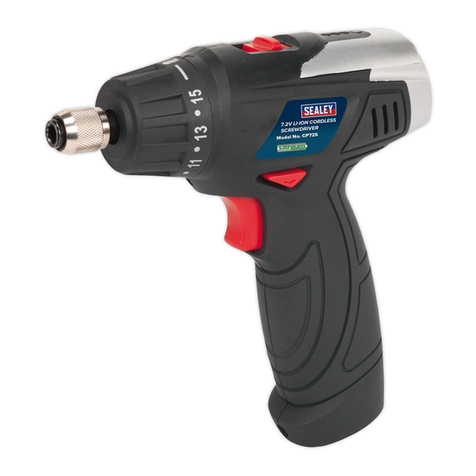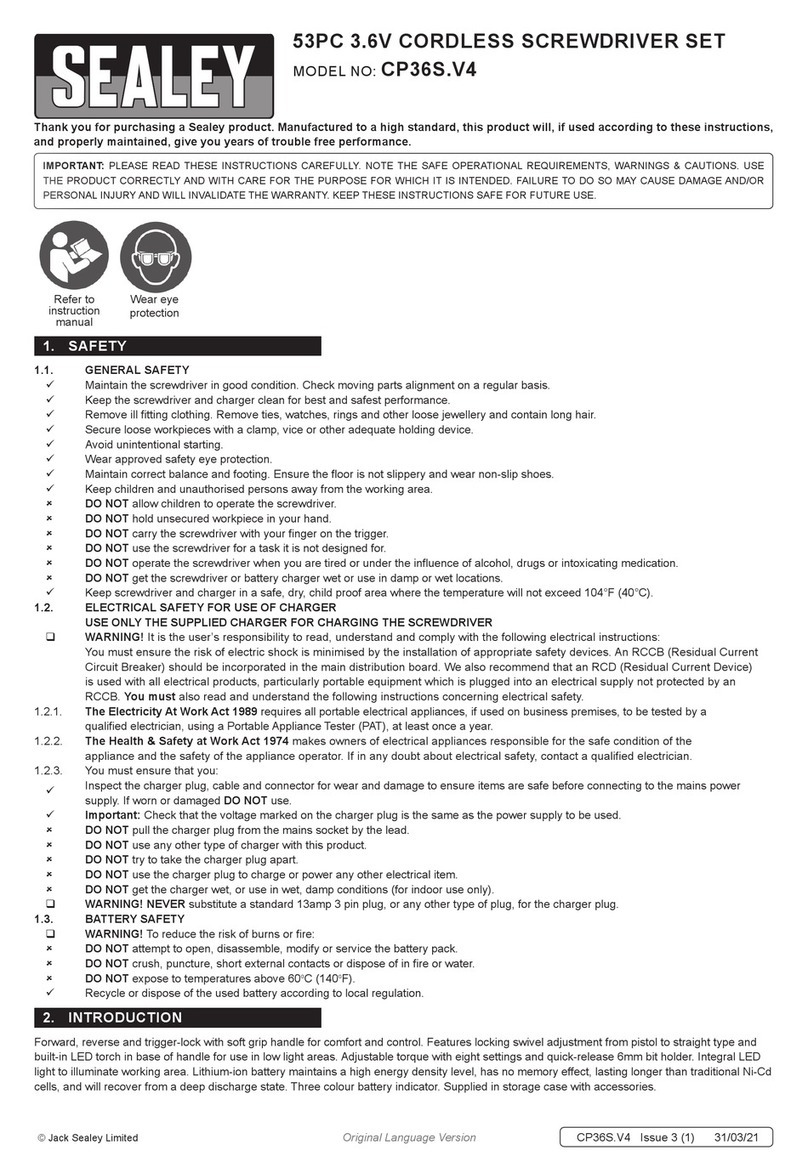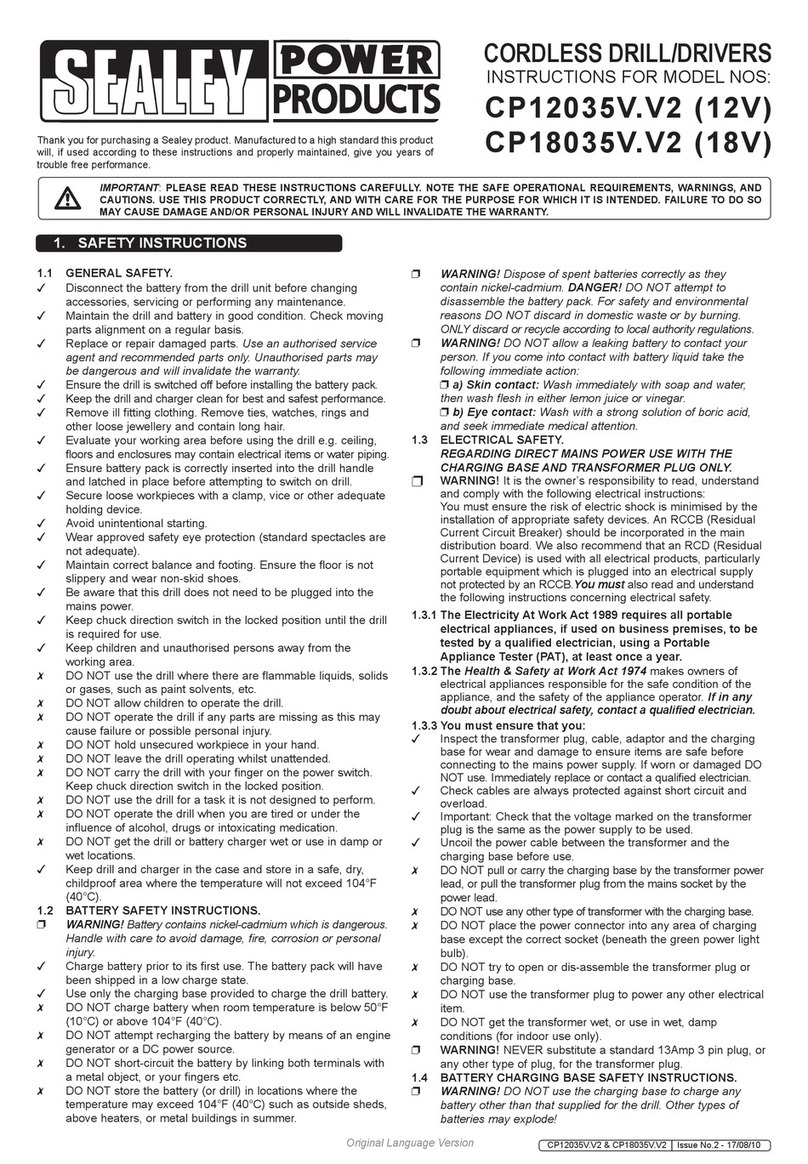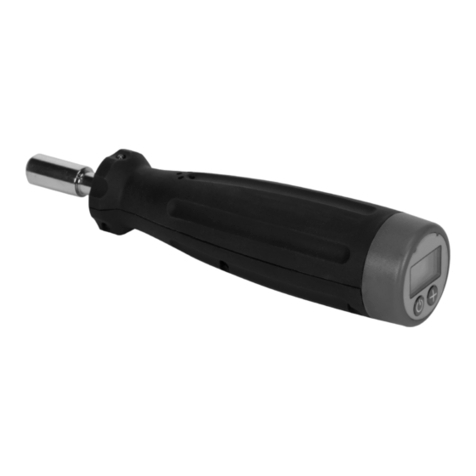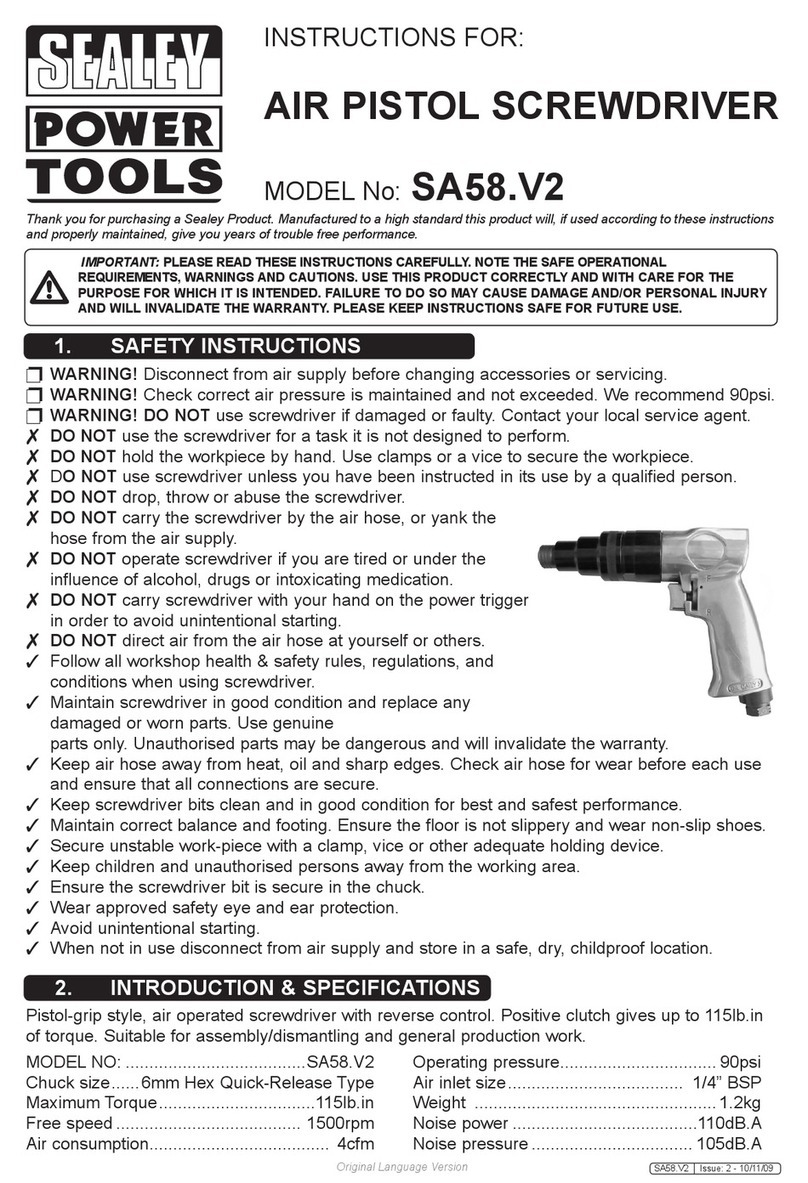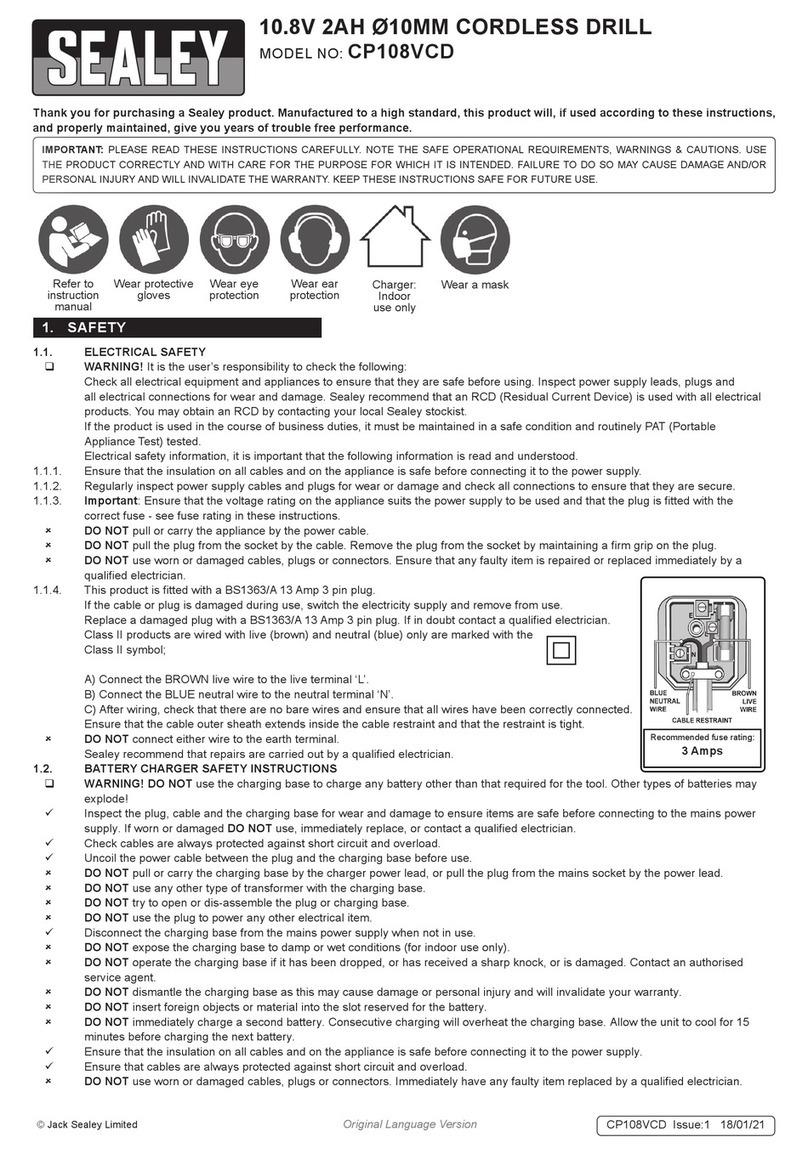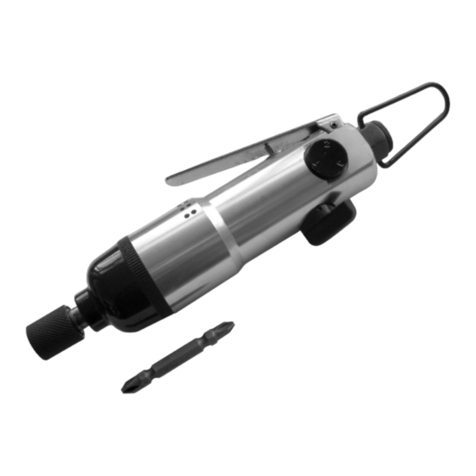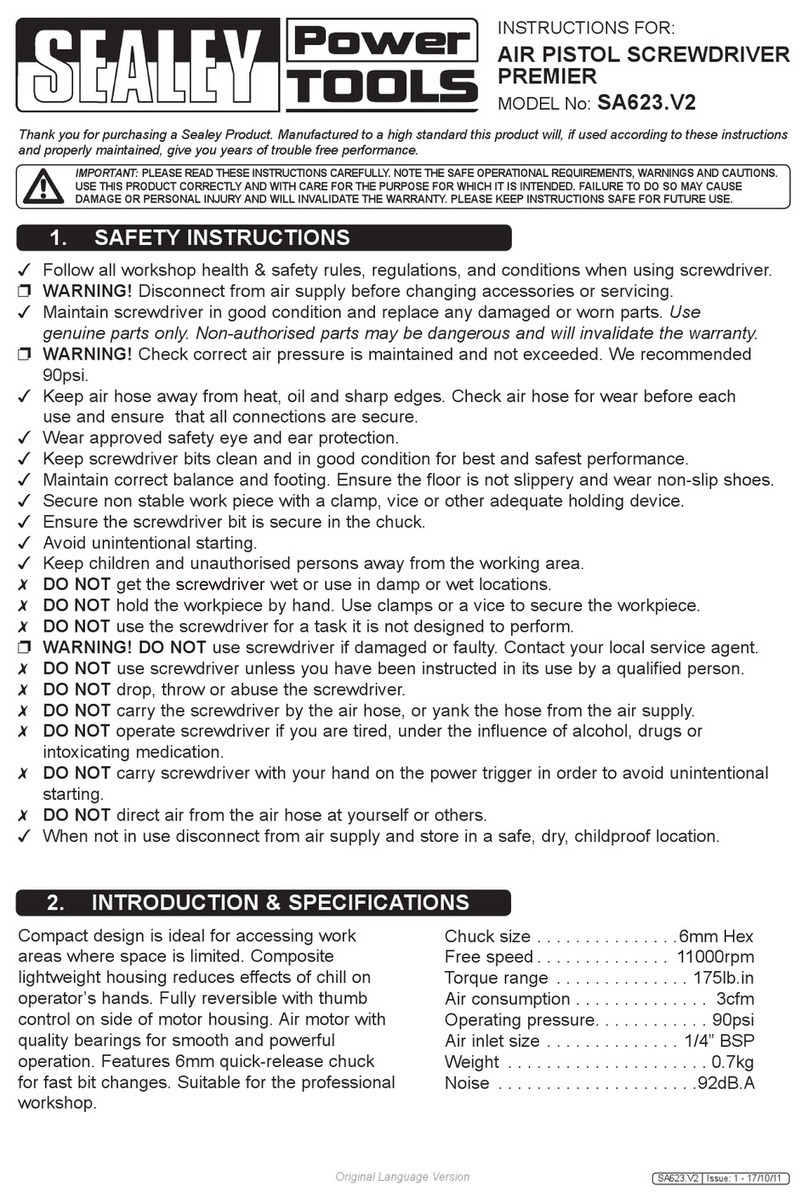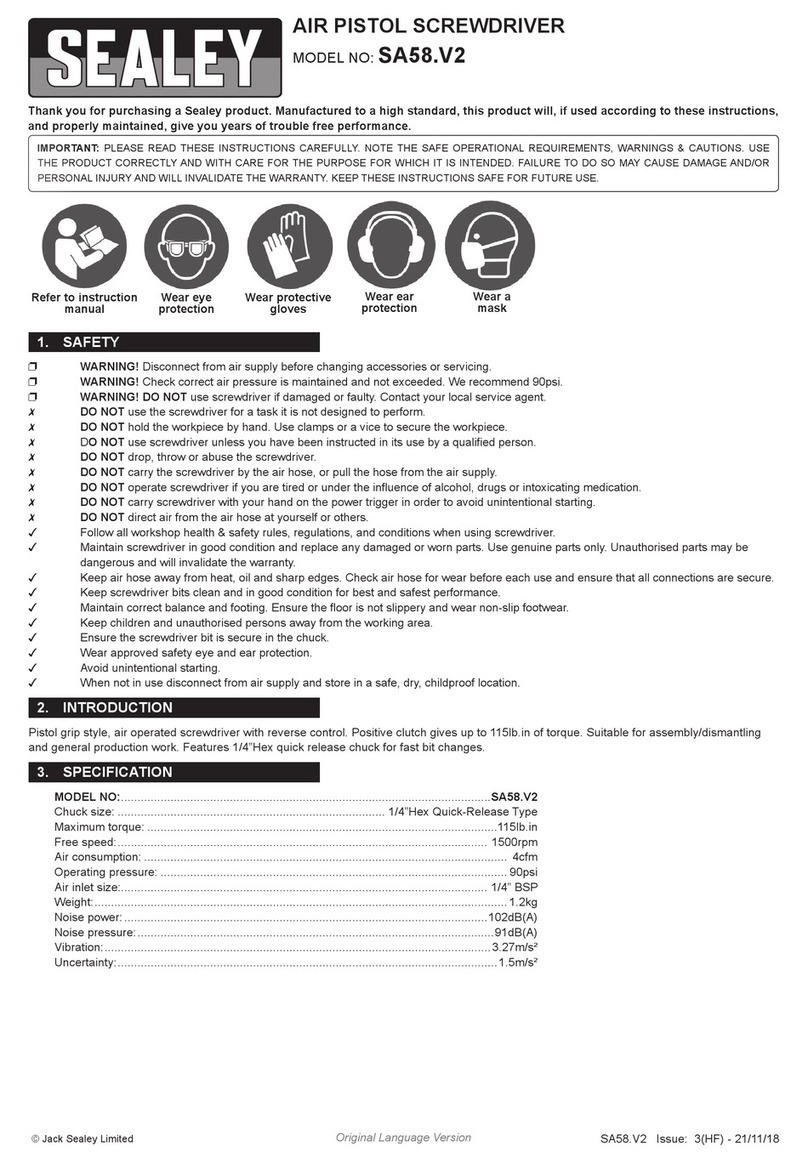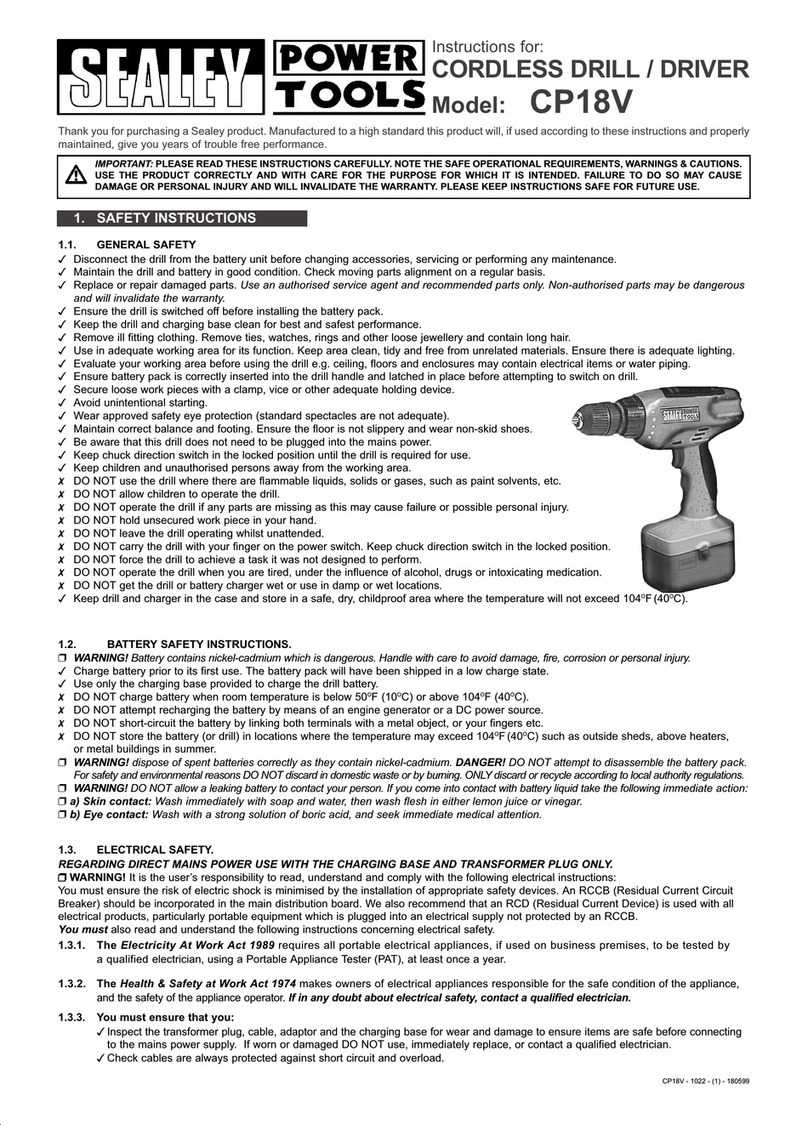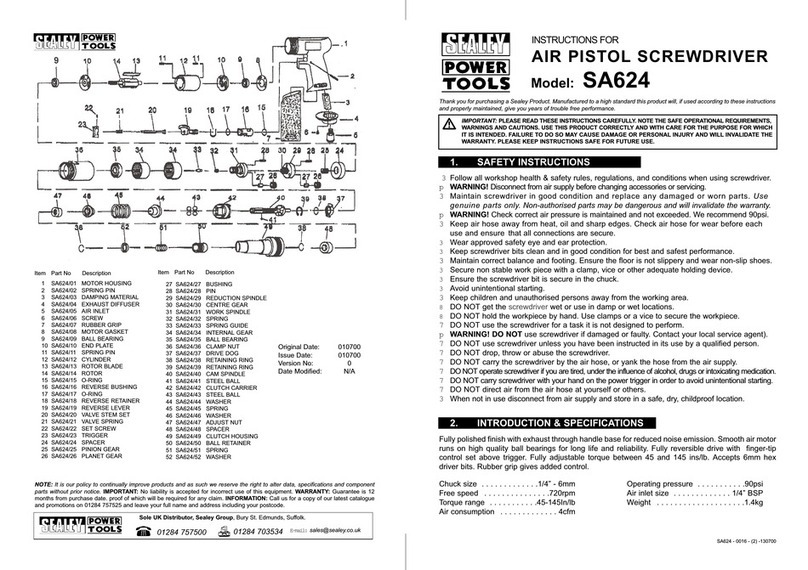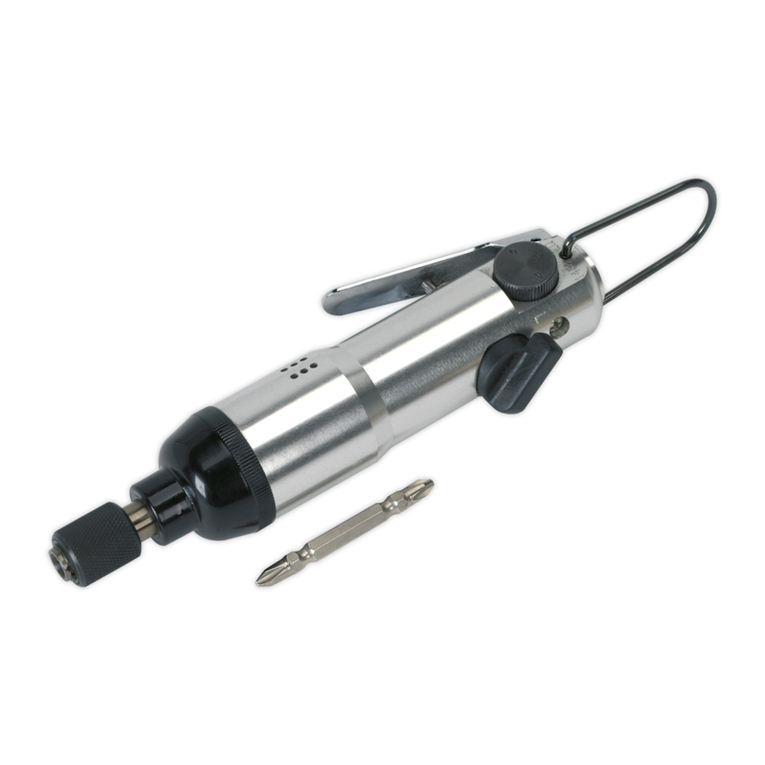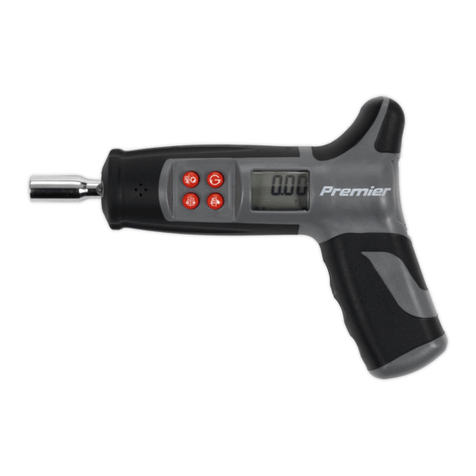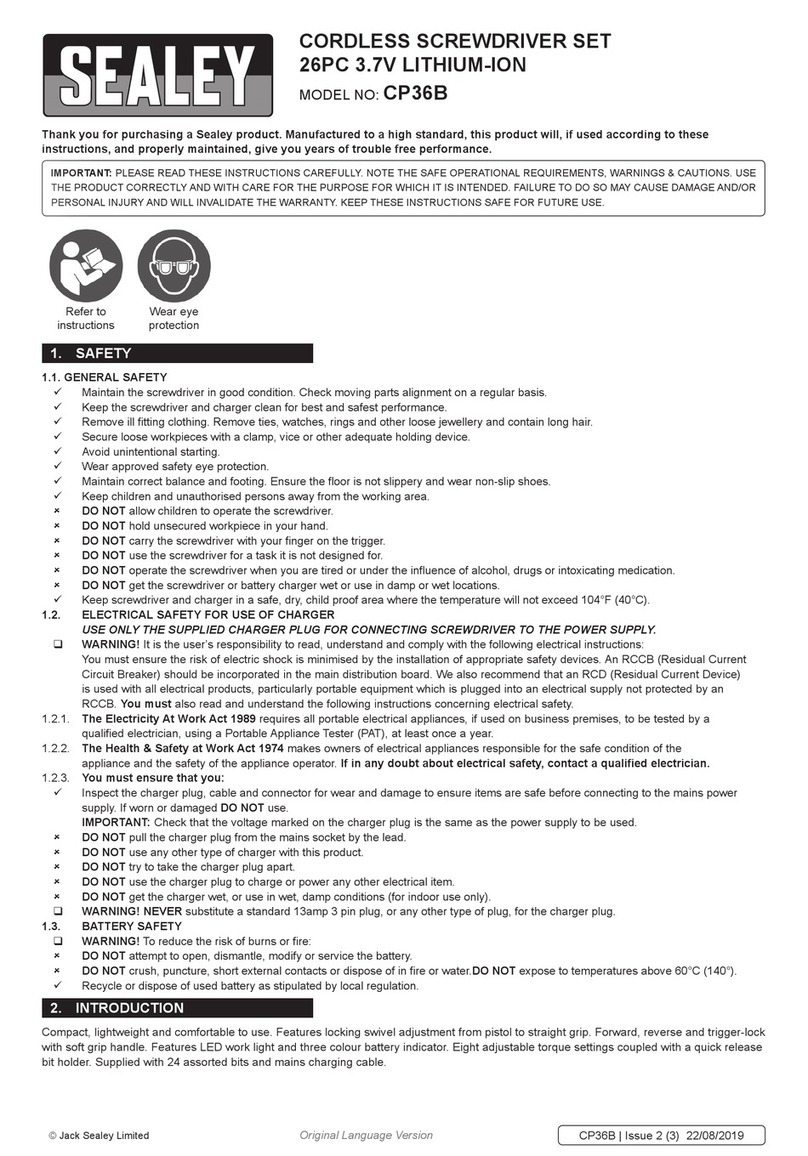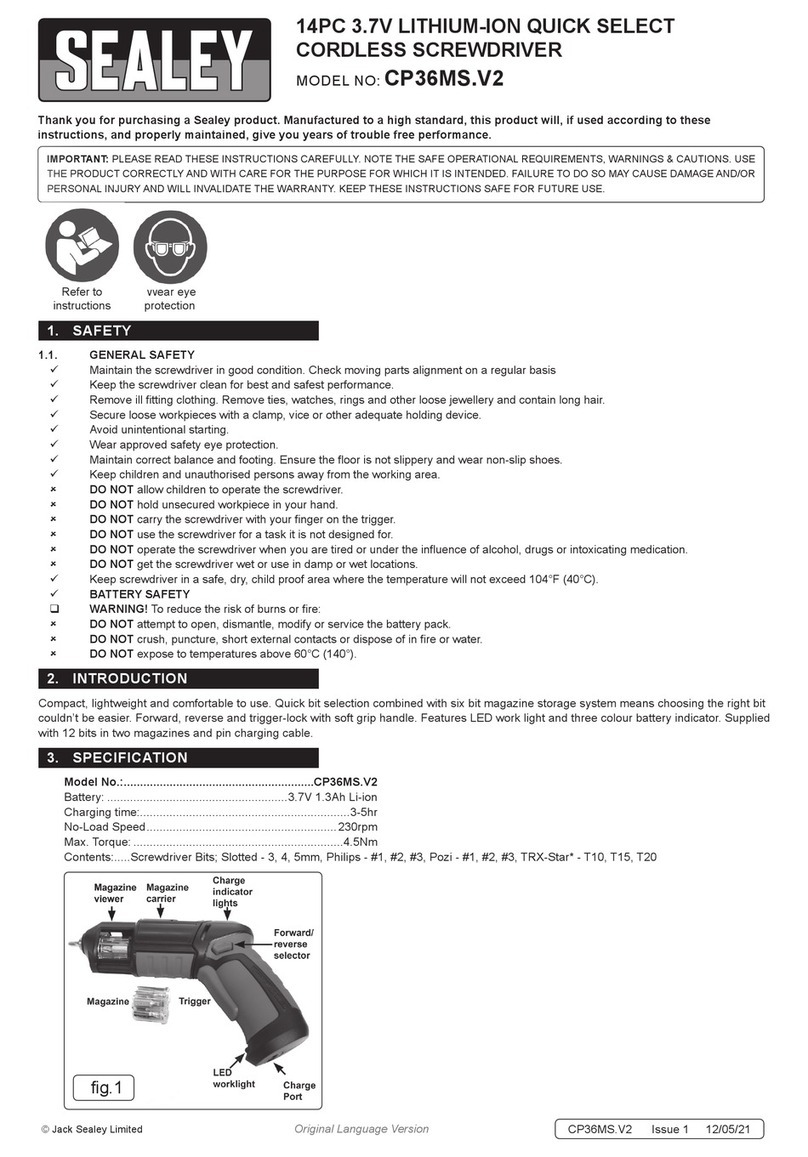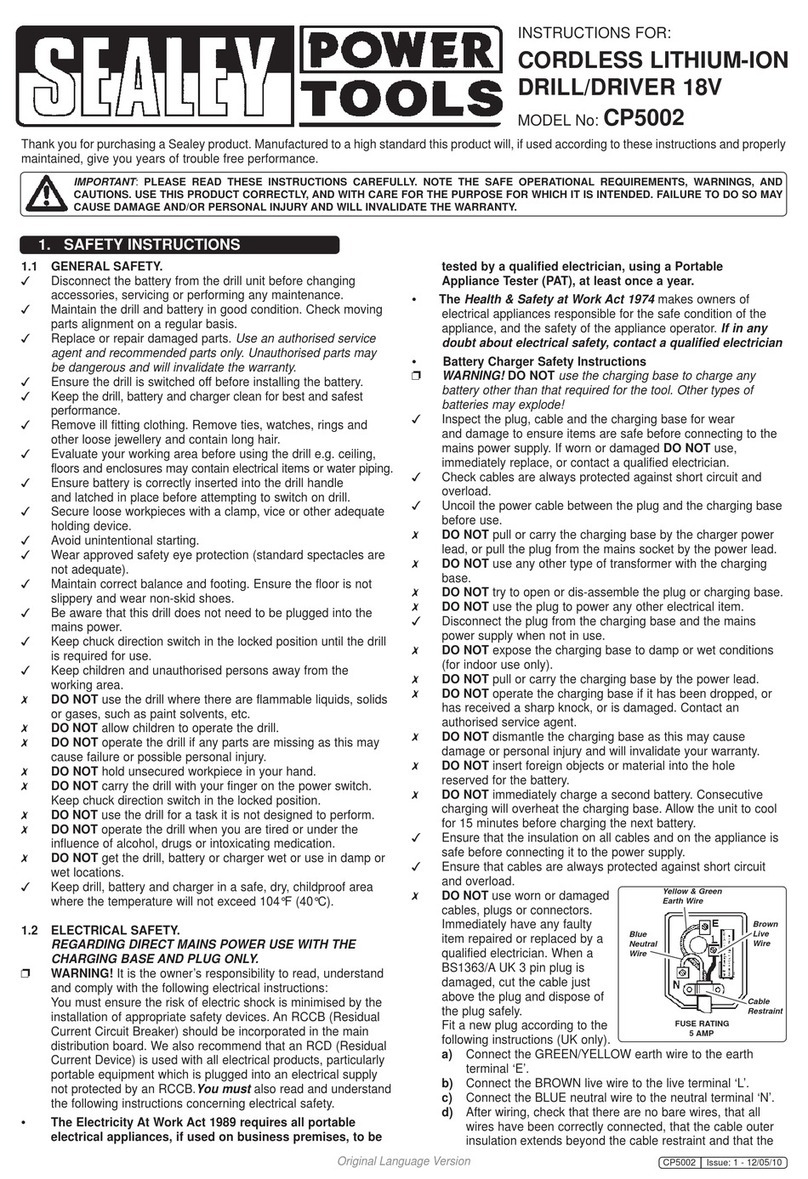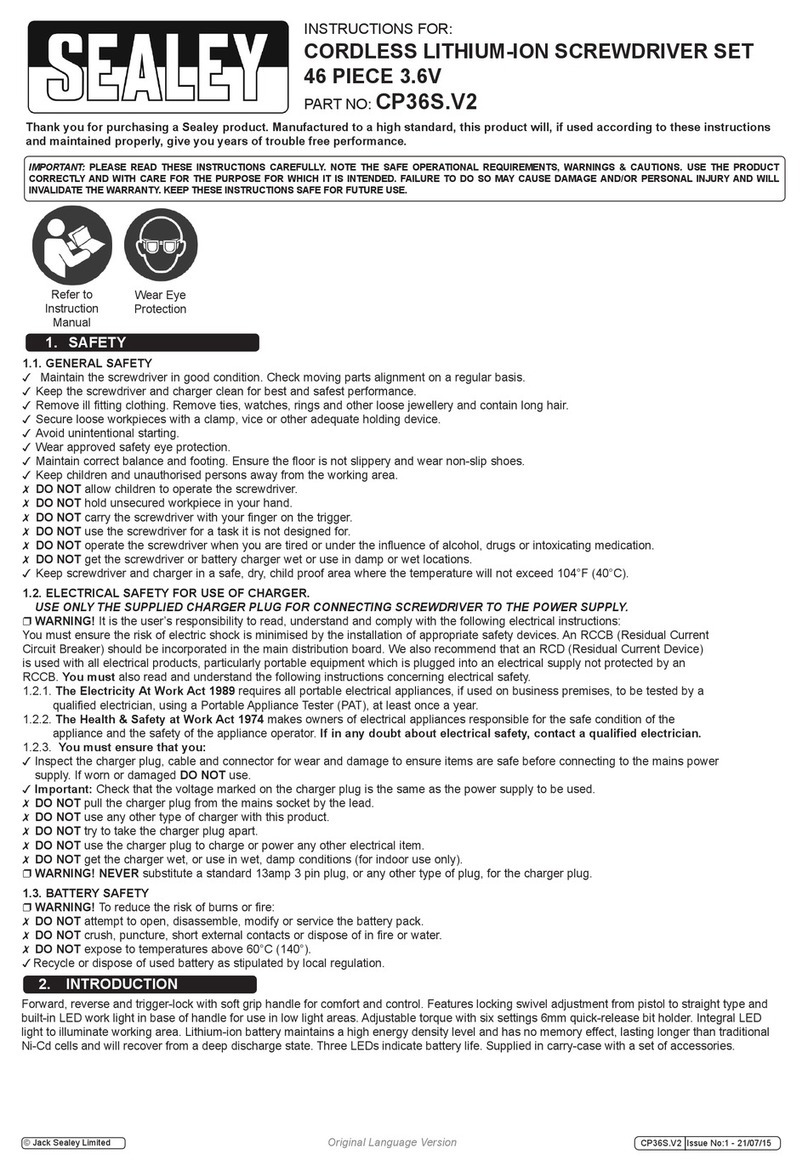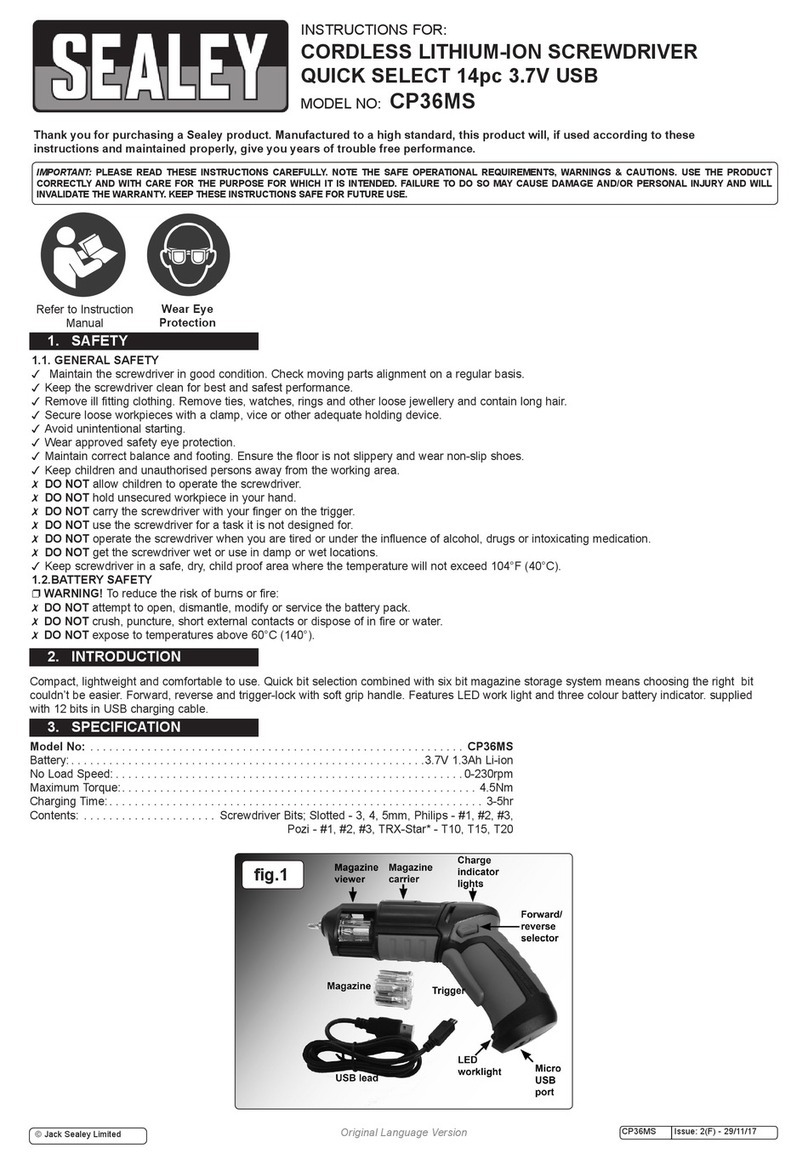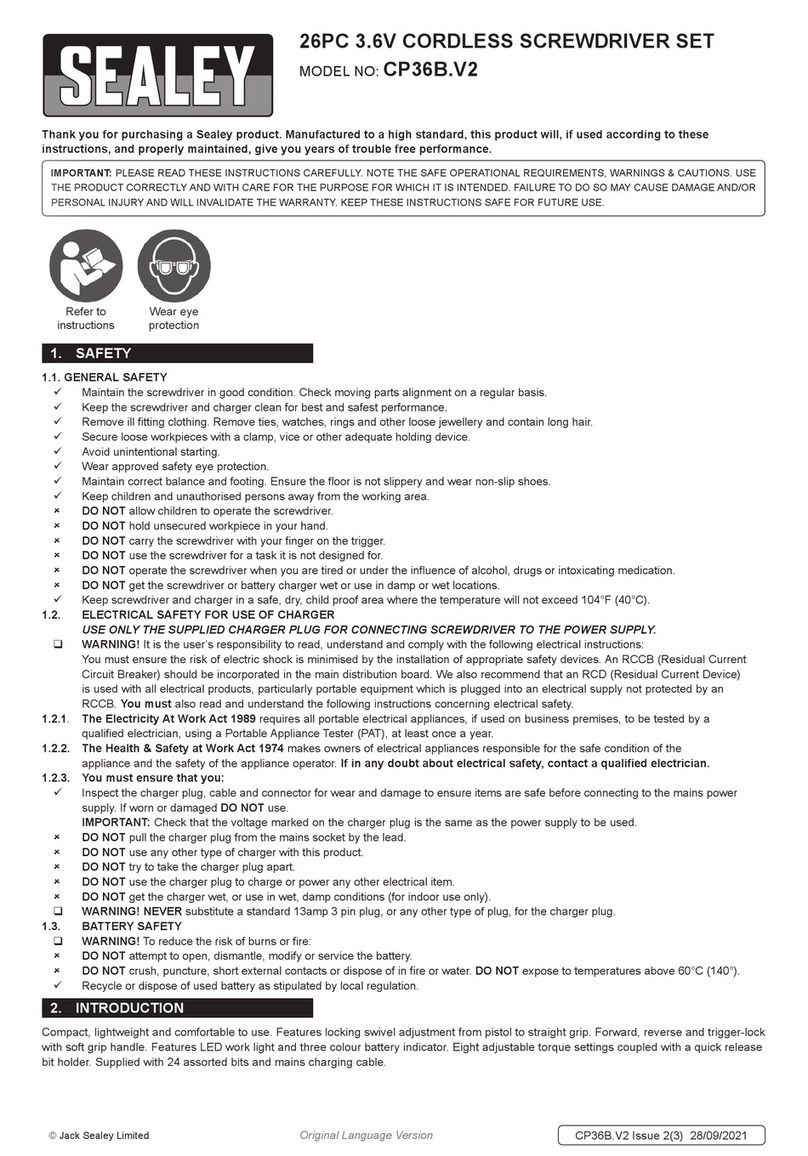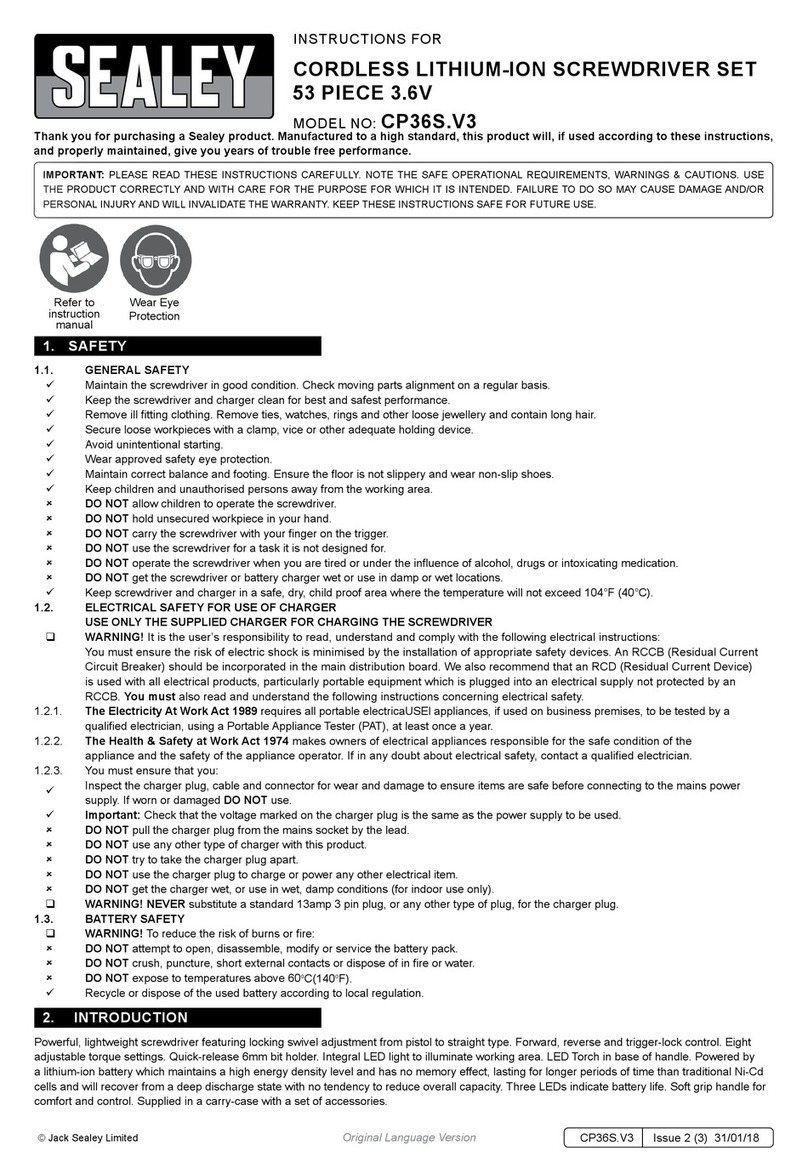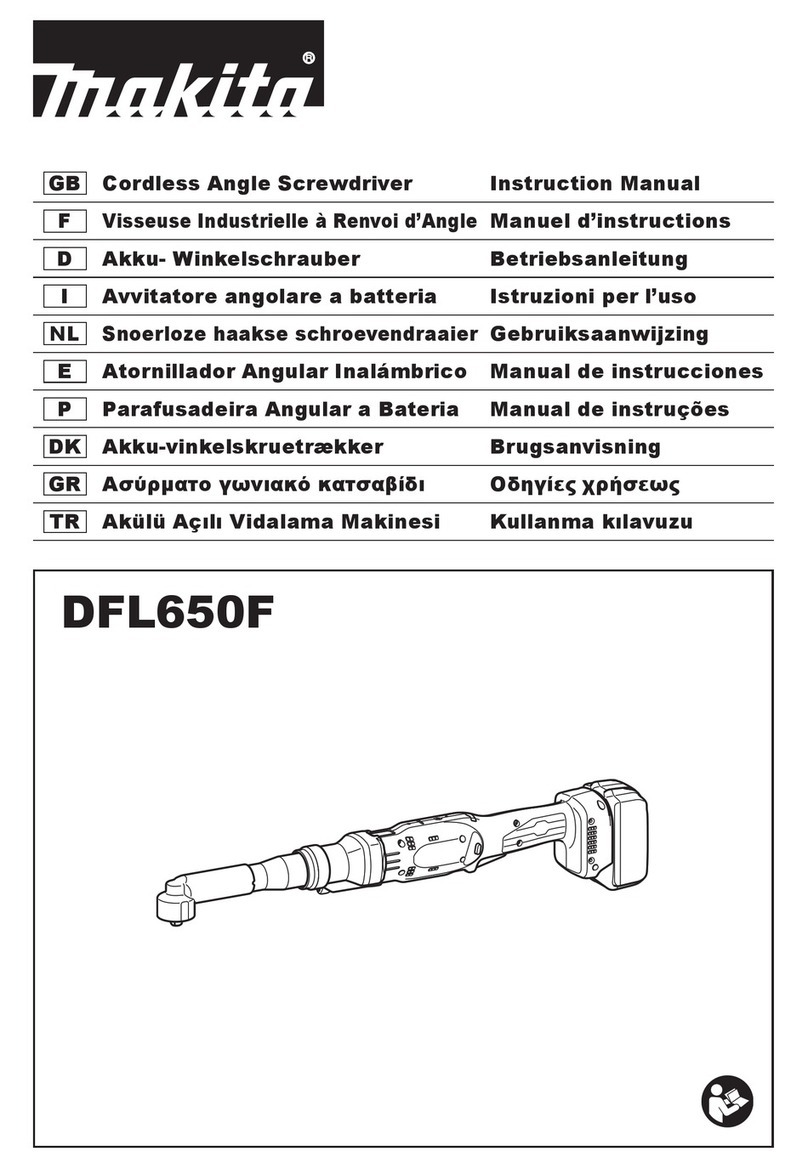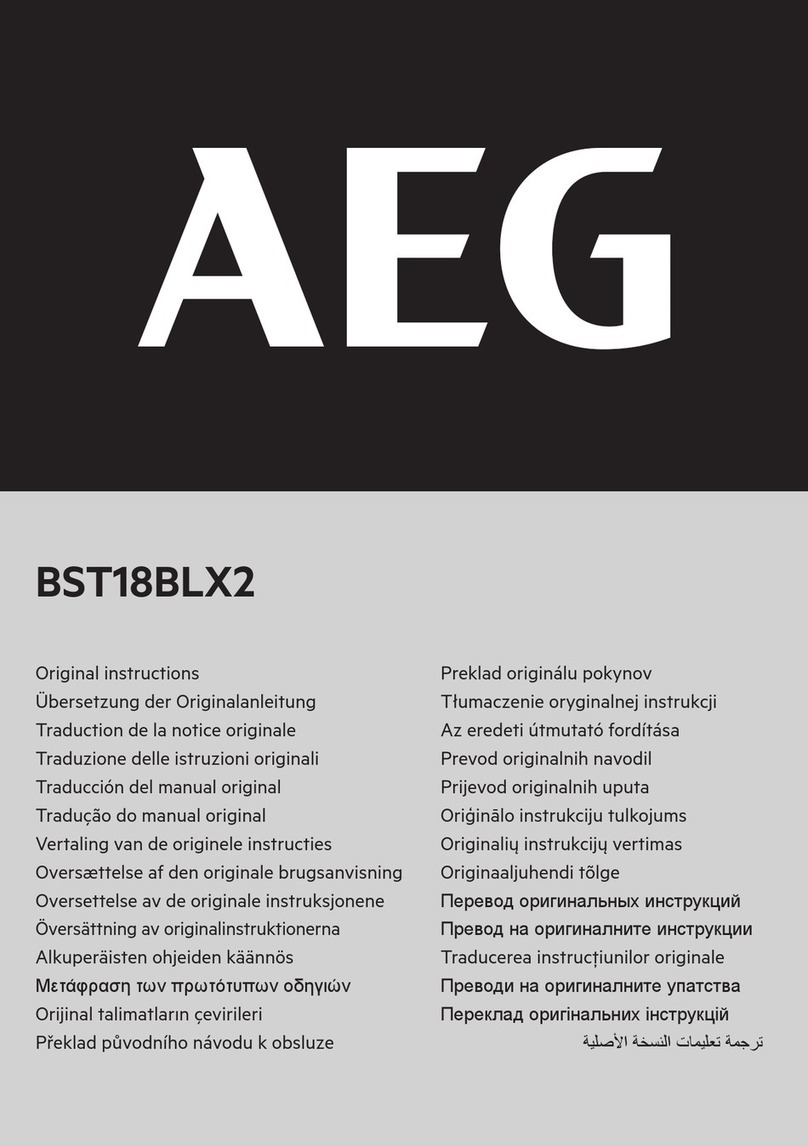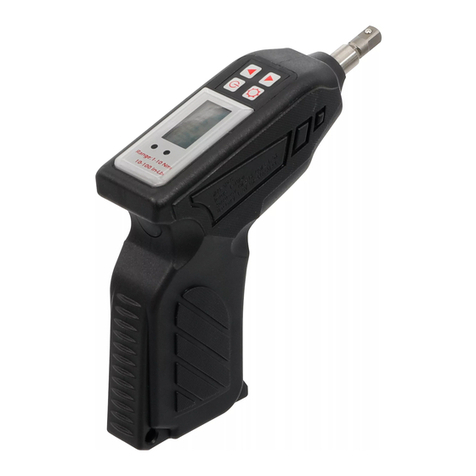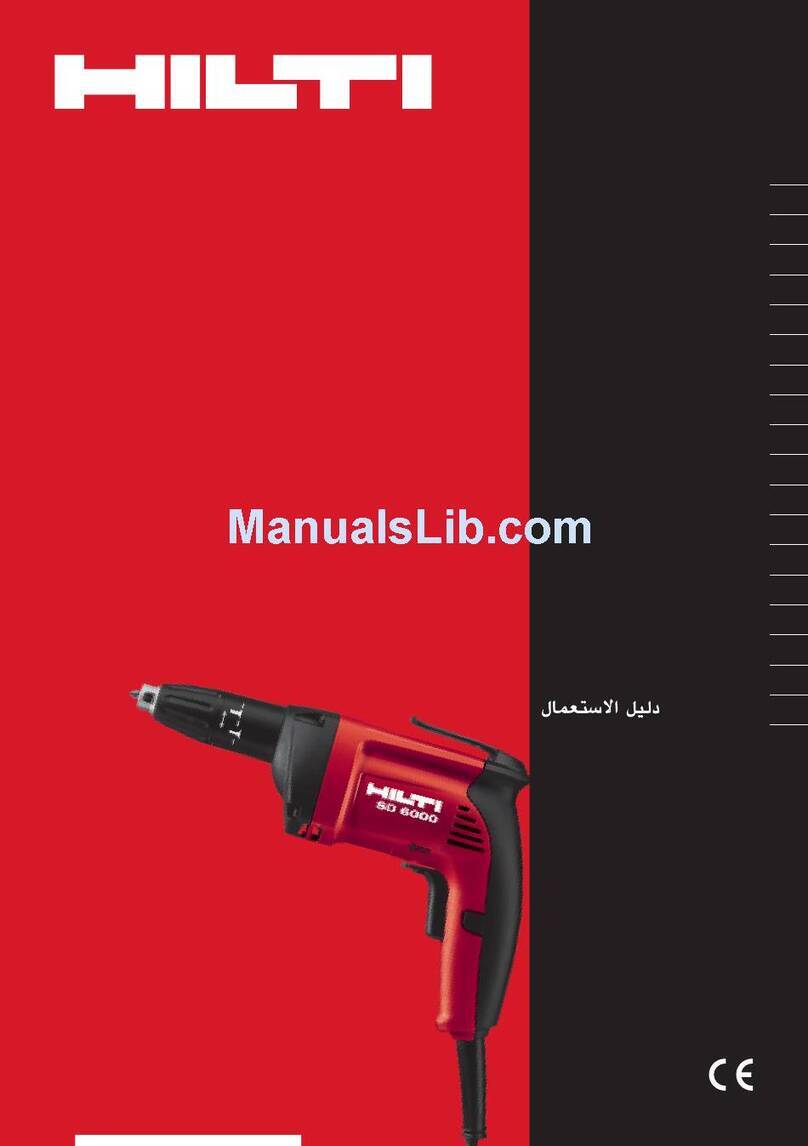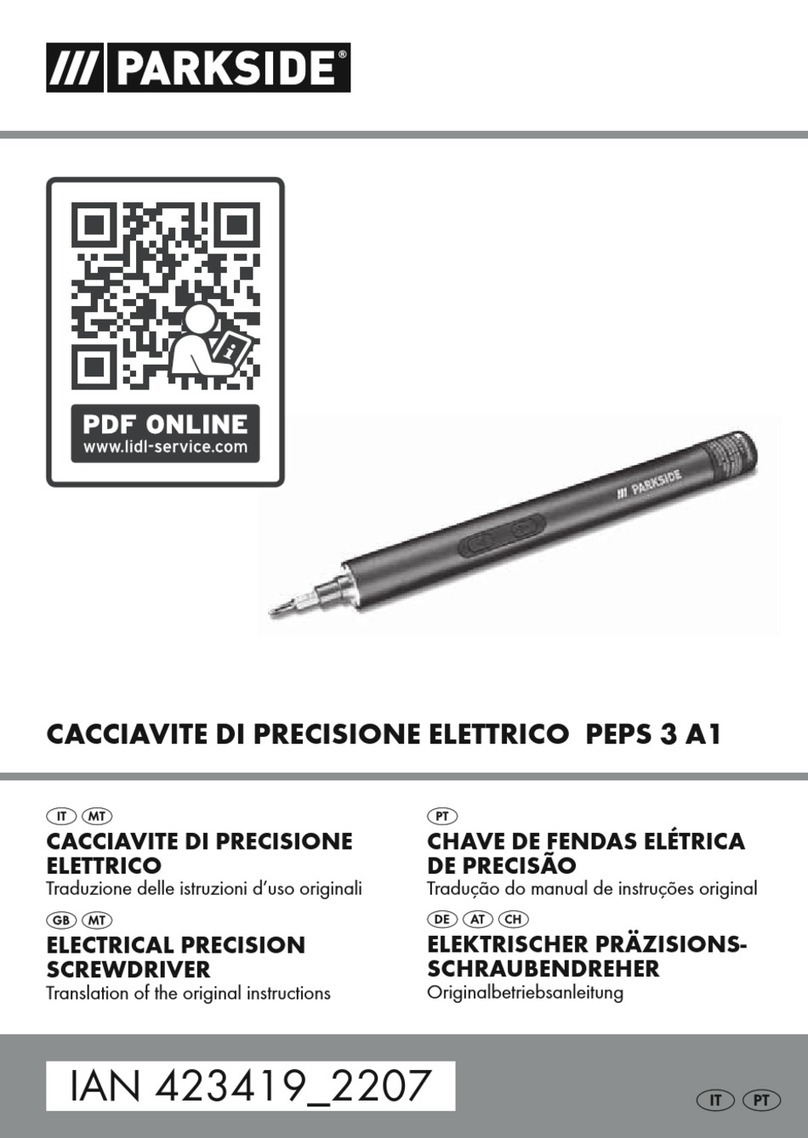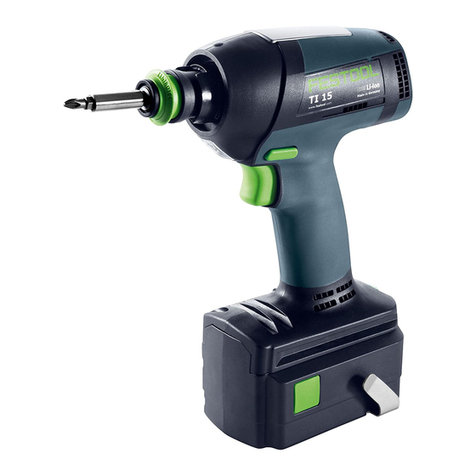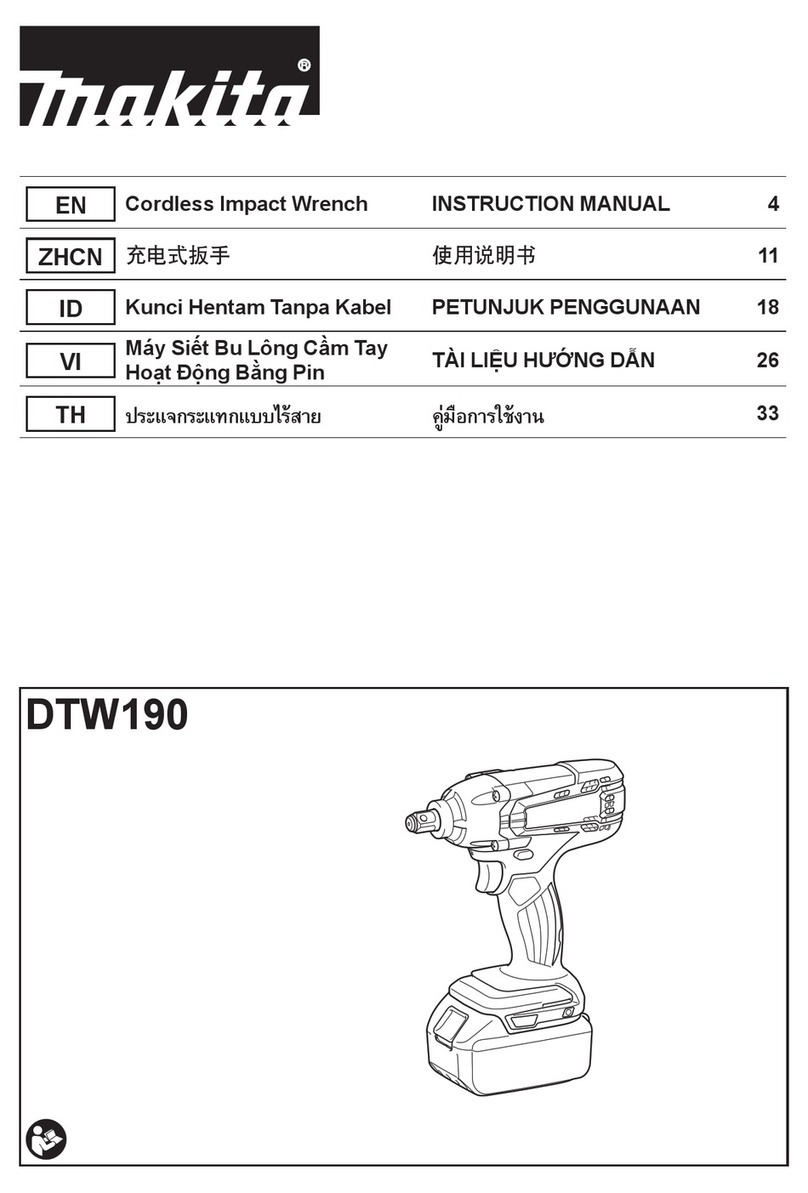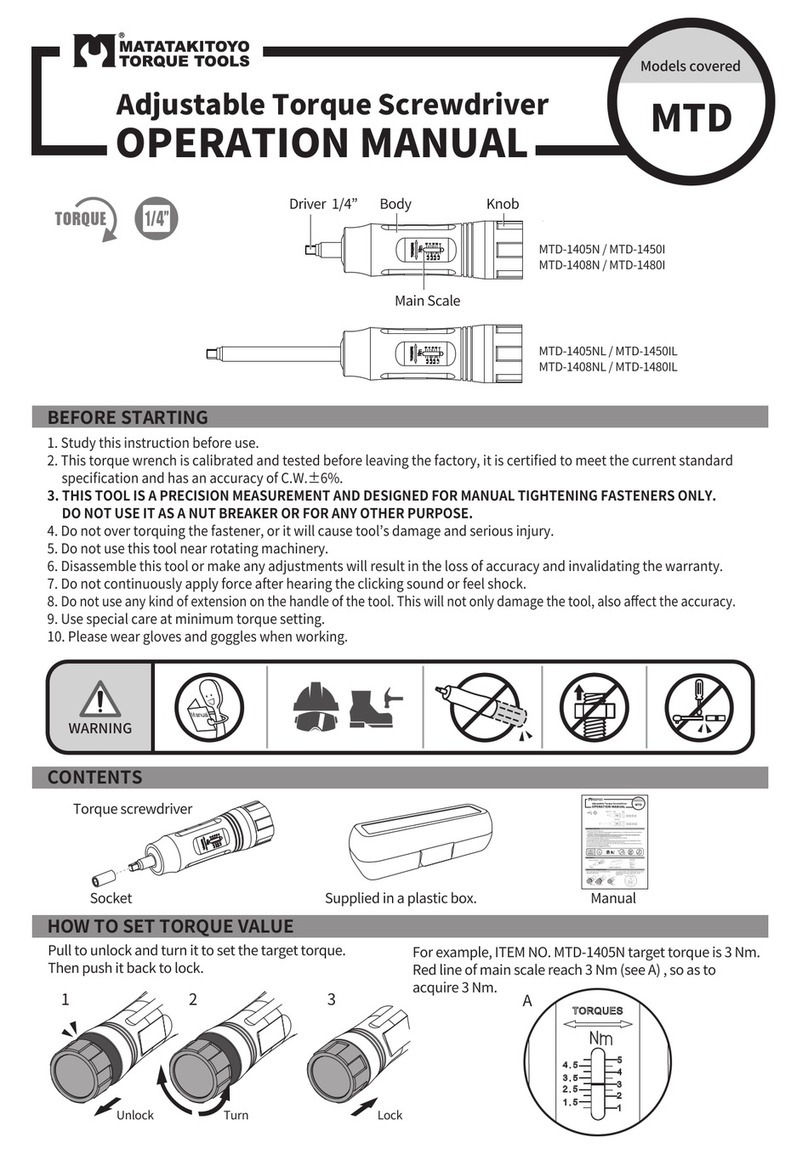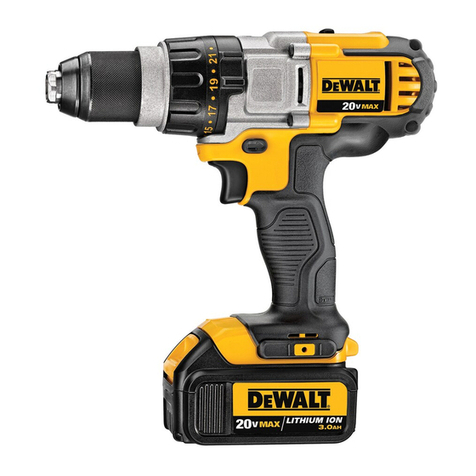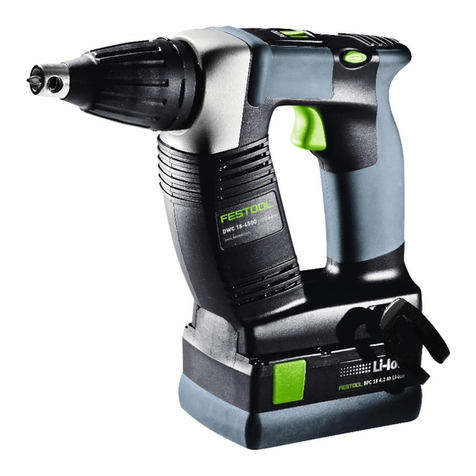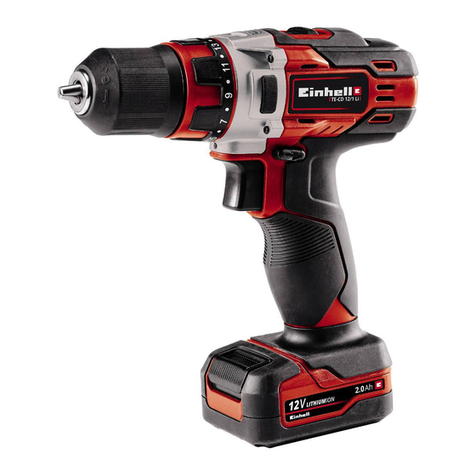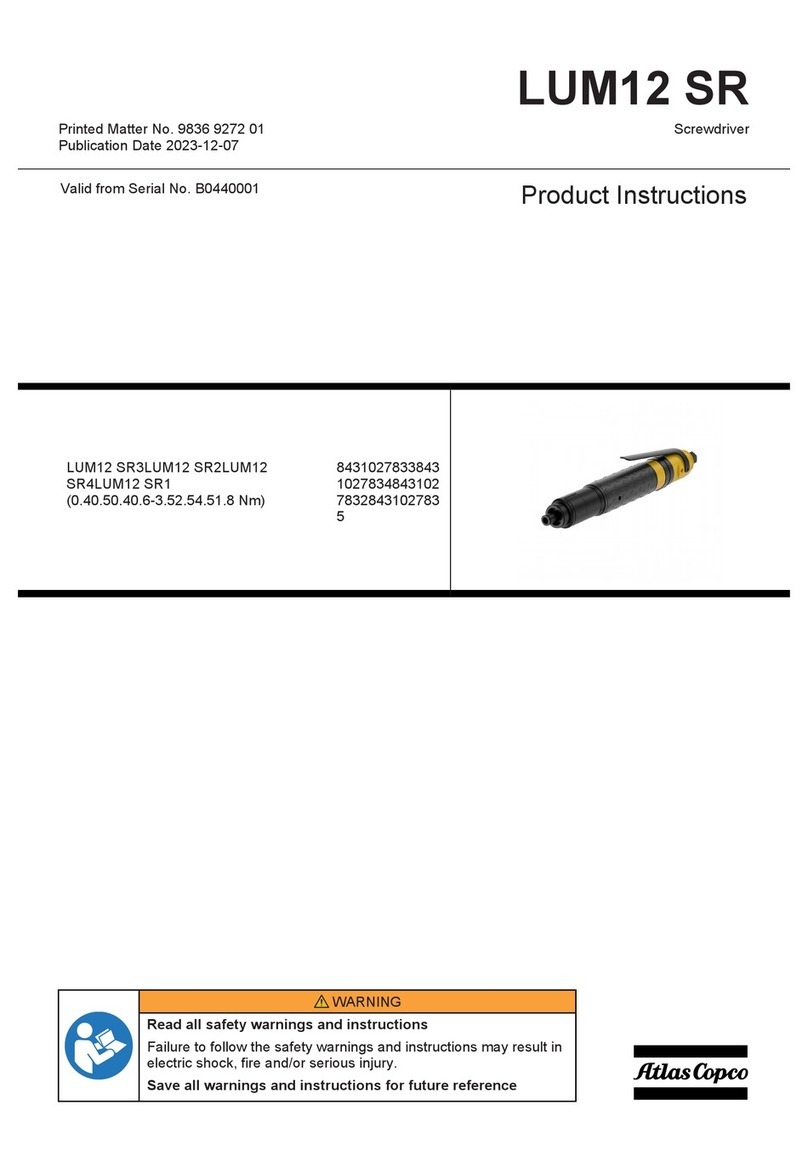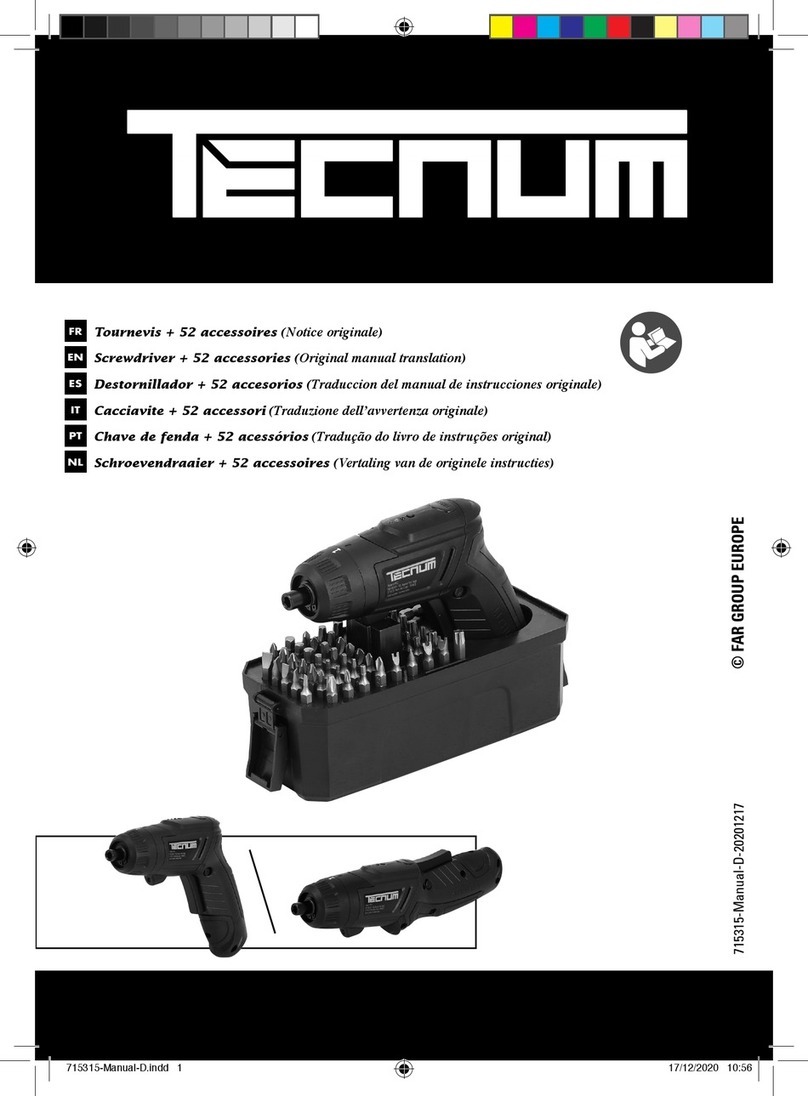
8DO NOT operate the drill if any parts are missing as this may cause failure and/or personal injury.
8DO NOT hold unsecured work piece in your hand.
8DO NOT leave the drill operating unattended.
8DO NOT carry the drill with your nger on the power switch. Keep chuck direction switch in the locked position.
8DO NOT use the drill for a task it is not designed to perform.
8DO NOT operate the drill when you are tired or under the inuence of alcohol, drugs or intoxicating medication.
8DO NOT get the drill or battery charger wet or use in damp or wet locations.
1.3. BATTERY SAFETY
9 Charge battery prior to rst use. The battery pack will have been shipped in a low charge state.
9 Use only the charger provided to charge the drill battery.
8DO NOT attempt recharging the battery by means of an engine generator or a DC power source.
8DO NOT short-circuit the battery by linking both terminals with a metal object, or your ngers etc.
8DO NOT store the battery (or drill) in locations where the temperature may exceed 104°F (40°C) such as outside sheds, above
heaters, or metal buildings in summer.
WARNING! Dispose of spent batteries correctly.
▲DANGER! DO NOT attempt to dismantle the battery pack. For safety and environmental reasons DO NOT discard in domestic
waste or by burning. ONLY discard or recycle according to local authority regulations.
▲WARNING! DO NOT allow a leaking battery to contact your person. If you come into contact with battery liquid take the following
immediate action:
a) Skin contact: Wash immediately with soap and water, then wash flesh in either lemon juice or vinegar.
b) Eye contact: Wash with a strong solution of boric acid, and seek immediate medical attention.
1.4. ELECTRICAL SAFETY
WARNING! It is the owner’s responsibility to read, understand and comply with the following electrical instructions:
You must ensure the risk of electric shock is minimised by the installation of appropriate safety devices. An RCCB (Residual Current
Circuit Breaker) should be incorporated in the main distribution board. We also recommend that an RCD (Residual Current Device)
is used with all electrical products, particularly portable equipment which is plugged into an electrical supply not protected by an
RCCB. You must also read and understand the following instructions concerning electrical safety.
1.4.1. The Electricity At Work Act 1989 requires all portable electrical appliances, if used on business premises, to be tested by a
qualied electrician, using a Portable Appliance Tester (PAT), at least once a year.
1.4.2. The Health & Safety at Work Act 1974 makes owners of electrical appliances responsible for the safe condition of the appliance
and the safety of the appliance operator. If in any doubt about electrical safety, contact a qualied electrician.
9Ensure that the charger and cable are inspected for wear and damage, to ensure they are safe before connecting to the mains
power supply. If worn or damaged DO NOT use, immediately replace or contact a qualied electrician.
9Check cables are always protected against short circuit and overload.
IMPORTANT: Check that the voltage marked on the charger is the same as the power supply to be used.
8DO NOT pull or carry the charger by the power lead, or pull the plug from the mains socket by the power lead.
8DO NOT use any other type of charger.
8DO NOT try to open or dismantle either charger or battery.
1.5. BATTERY CHARGER SAFETY INSTRUCTIONS
WARNING! DO NOT use the charger to charge any battery other than that supplied for the drill. Other types of batteries may
explode!
9All mains electrical supply safety features must be followed as described in 1.3. above.
9Disconnect the charger from the mains power supply when not in use.
9Store the charger in the same manner as the battery, see section 1.2.
8DO NOT operate the charger if it has been dropped, orhas received a sharp knock, orisdamaged. Contact an authorised service
agent.
8DO NOT insert foreign objects or material into the hole reserved for the battery.
8DO NOT force the battery into the charger. The battery will only t one way to ensure correct polarity alignment.
8DO NOT charge a second battery immediately. Consecutive charging will overheat the charger. Allow the unit to cool for 15 minutes
before charging the next battery.
8DO NOT attempt to connect two chargers together.
2. INTRODUCTION
. Compact, lightweight design powered by Lithium-ion battery technology which gives an all-round better performance than standard
Ni-Cd/Ni-MH cells. Composite housing with built-in LED battery level indicator and LED work light. Ø0.8-10mm Keyless chuck with
added hammer function. 2-Speed settings and 21 torque settings allows control when tightening screws. Features a metal belt clip
for safer storage while not in use. Supplied in storage case with battery and mains charger.
3. SPECIFICATION
Model No:.................................................CP18VLD.V2
Battery: ................................................18V 1.5Ah Li-ion
Chuck Size:....................................................... Ø10mm
Impact Rate.....................................0-6000/0-22500rpm
Maximum Torque:..................................................31Nm
No Load Speed:..................................0-400/0-1500rpm
Noise Power / Pressure ...............................95/84dB(A)
Replacement battery:.................................CP18VLDBP
Original Language Version
© Jack Sealey Limited CP18VLD.V2 Issue 1 07/11/22
